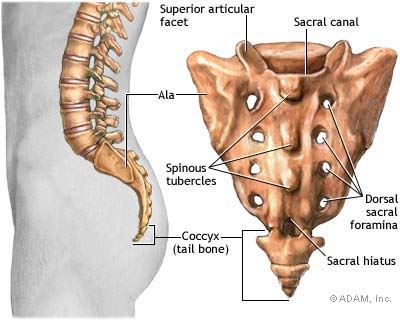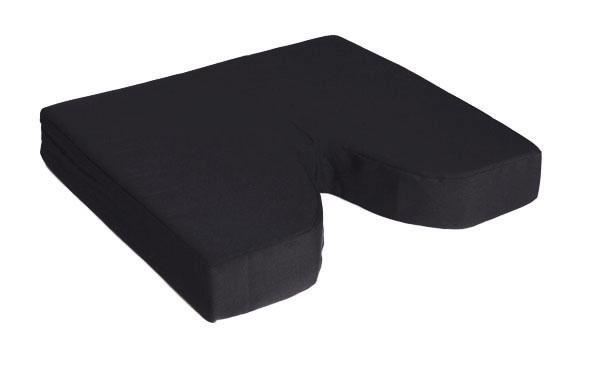- Home
- Patients
- Patient Information
- Coccydinia and Operations for Coccygeal Pain
Coccydinia and Operations for Coccygeal Pain
 What is Coccydynia?
What is Coccydynia?
It’s a collection of conditions which result in pain in the area of the coccyx (tailbone).
Why does Coccydynia occur?
There are four major reasons why pain in the tailbone region occurs
- Common (idiopathic) coccydynia is poorly understood. There are numerous theories proposed as to the origin of the pain namely from the pericoccygeal soft tissues, spasm of the muscles of the pelvic floor, referred pain from lumbar nerves etc. Thus far, there has been no sound confirmation of any of these.
- Because patients often mention a fall on the buttocks or a delivery as precipitating event, a mechanical basis for the pain is likely. In addition, in the majority of cases, the pain occurs only in the sitting position. The most common trauma is a fall on to the bottom. Accidents like slipping when walking down stairs, or falls when skating or just on a slippery floor are often the cause.
- Childbirth can also strain the coccyx. Apparently the joints around the pelvis become more flexible towards the end of pregnancy, to allow delivery of the baby. This allows the coccyx to be pushed out of position more easily. Some women start getting the pain during the pregnancy, and some get it during and after delivery of the baby.
- Other less common causes of this condition include nerve pain secondary to repeated damage, cyst formation, infection, lump around the region, obesity (due to excess pressure on the coccyx when sitting), and a bursitis like condition that can arise in slim patients who have little buttocks fat padding, allowing the tip of the coccyx to rub against the subcutaneous tissues, causing friction.
How is it Diagnosed?
A complete history from the patient and thorough medical examination is essential. The diagnosis is almost always clinical.
There is usually classic pattern of symptoms i.e. pain brought on or aggravated by sitting.
The main purpose of visiting the doctor is to rule out other causes that have been discussed above.
Blood tests and X-Rays do not help in diagnosing the condition though they might be used to rule out other causes of the problem or as reassurance to the patient.
Though various X-rays have been mentioned in literature these have not been shown to help greatly in diagnosis or assist in managing the problem.
Further special tests like MRI and Bone scans are only done in rare situations when the diagnosis is in doubt or other causes are being rules out.
 How to Manage Coccydynia?
How to Manage Coccydynia?
Treatment most often is conservative and consists of tablets such as ibuprofen and naproxen to reduce inflammation. If a prolonged period of sitting is anticipated then simple paracetamol beforehand will often reduce discomfort and is very safe.
The use of a therapeutic sitting cushion to take the pressure off of the tailbone when sitting may be helpful to reduce discomfort. (pictured)
Management
It might take many weeks or months of conservative treatment before significant pain relief is felt. The natural history is however one of spontaneous recovery.
If there is persistence of symptoms your doctor or the visiting surgeon might offer an injection. This is usually at the joint (sacro-coccygeal) which is thought to generate the pain. The injection consists of a mixture of corticosteroids and local anaesthetic and can be given as a series of up to three. This is useful as a diagnostic tool too as relief of symptoms even if temporary confirms the diagnosis. Risks from these injections are quite small.
Physiotherapy and Manipulation of Coccyx have been extensively studies though recent studies have shown them not to be of much help.
Surgery in the form of coccygectomy is usually the last resort. Very few of the presenting patients with tailbone pain end up having surgery. Patient selection usually vital and it is thought that patients who respond to injections have a higher chance of success. Risks of surgery includes infection, persistent problems, scar pain and damage to neighbouring structures. Various case series have shown about 60-70% good or excellent results on a carefully selected group of patients.
Are there any long-term problems with Coccydynia?
Coccydynia is usually a benign and self resolving problem though it takes a long time for symptoms to die out. Very rarely do patients suffer after five years. There have been no reported long term health issues or complications as a result of coccydynia.
.jpg)